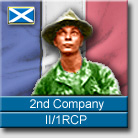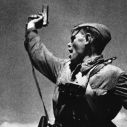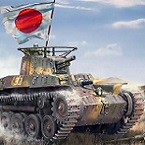bcgames
Posts: 2527
Joined: 6/2/2010
From: Bramble Rose Farm, KS
Status: offline

|
COMBAT TIPS
On Ground Operations.
• Use Combined Arms. Shock-neutral (shock=0) units can attack with tank units and not degrade their Shock modifier. If you attack using shock-capable units with leg infantry, then you will dilute your Shock and have reduced odds.
• Fight for intelligence. It’s not just the job of recce to get intel. Get infantry, artillery, and engineers into the process of fighting for intelligence. If you want intel—you need to go and get it with whatever means are available. Fight if you have to to get it.
• Maintain a Reserve. The last side to commit its reserve WINS! If there are two units left on a side – one of them is in reserve! If you commit your reserve--designate a new one--every time.
• Maintain Organizational Integrity. Don’t commit units from two different divisions to an attack against the same hex. Generally speaking, there is no benefit if you do; most often you will be punished with unfavorable odds shifts by combining the attacks or defenses of units from different HQs. If you must do it, use a Main Effort Ground Asset (if available) to overcome the disadvantages.
• Don’t Mix Corps and Division Artillery Attacks. You decrease the potential attack strengths of these units by combining them. They too fall under the organizational integrity rules. But...if the final numbers generate the odds that you need – do it.
• Keep HQs units out of range of enemy artillery. HQs units are easy to destroy if left exposed to the combined attacks of enemy artillery units and/or air assets. HQs units provide MANY easy victory points to the enemy. Their loss SEVERELY degrades the capabilities of their subordinate units. Protect your HQs units; move often – protect always.
• Anti-tank ARE.... Always place your anti-tank units so they are in position to face the enemy’s tanks. AT units twiddling their thumbs in distant locations where their armor-negating capabilities can’t be used are wasted resources.
• Anti-aircraft IS.... Positioning antiaircraft units to protect high-value friendly units vulnerable to enemy air attacks is one thing...positioning antiaircraft units deliberately--to kill enemy air assets is another. A honey pot draws flies. How can you create one? Think about it.
• Ambush Avoidance. Avoid use of road movement mode to enter enemy territory; ambushes can devastate an entire road column. Have security forward and don’t out-run it. On the other hand? Use road movement to run a corps around an open flank into the enemies rear...Fortune favors the bold.
• Artillery Target’s Intel Level
Artillery (and Air and Naval) attack strengths can be reduced or increased based on the level of intelligence acquired about enemy units in the target hex (see Fog Of War). Attack factors of artillery units, and naval and air assets* being used to attack enemy unit(s) in a hex are modified as follows:
Column 1 Average Intel Artillery /Naval /Air Level of Hex
Column 2 Attack Factor Multiplier
0 No Fire
1 0.15
2 0.35
3 0.75
4 1.00
5 1.10
Round fractions down for the average intel in a hex; however, cannot be reduced below one. The AF of artillery and naval units supporting a friendly ground unit defense (Ground Support mission) equals AF x 1.00.
• On Artillery Movement. If artillery is moving, it isn't shooting. Figure out where your artillery needs to be to "get the job done", then move it there, park it and shoot, shoot, shoot. Ground Attack...Ground Support--whatever. Bottomline--moving your artillery will do nothing for you unless you are moving it to a location where it will make a difference by Brassing-up the Target.
On Air Operations.
• Fly 'em, Rest 'em. Don’t fly your Air Assets turn after turn without rest. Never fly more than 2/3 of your air assets unless the situation demands it, and/or you have a rest plan that supports it. 50% on and 50% off is the way to keep your air assets rested. If they are not rested you will find them absent when you need them the most.
• AA exists for a reason. Place your AA units so they protect those units in your main effort that are most vulnerable to air attack. While defending, identify where the enemy’s main attack is and protect those units facing it. HQs and artillery units behind the line that are supporting the main effort should be protected with the same vigor as those critical points on the front line.
• Counter-air is important. Supporting ground operations requires much more than just providing close air support to individual attacks and/or attacking individual enemy units on the battlefield. Air superiority helps insure unfettered ground unit movement, the resupply of fuel and ammo points, and sustainment of command and control ranges.
On Naval Operations.
• Threaten. The threat of naval bombardment can be just as useful as its actual employment. Once employed – that threat is gone.
• Destroy. If you find an enemy HQs within range of naval assets, attack! Throw in some air assets if available and artillery if in range. Strike the HQs – Kill it. This impacts the supply status of all its subordinate units.
On Logistics Operations
• Spend Supplies Wisely. Don’t be stingy with your supplies; Fuel and Ammo points that remain at the end of a scenario are unused combat potential.
• Manage Supplies. HQs consume Move+ and/or Combat+ supply points based on their most costly subordinate unit. The most costly units are armor, mechanized, or motorized units.
• Think Supplies. Supplies and the lines of communications along which they travel represent the combat power potential of ground units. Never start – nor end a turn – without checking the supply status of your units – and taking action to fix or mitigate any logistics issues.
• Offense vs Defense. Generally speaking, you will use more fuel than ammo. Burn off that “excess” ammo by providing Combat+ supply to organizations that have artillery units in position and ready to expend it. Corps artillery units with Combat+ supply are sledge-hammering destroyers of enemy units.
General
• Rest your units. After each third turn (3, 6, 9, 12, etc.) there is a “night” phase during which units recover readiness at double the normal rate; use this opportunity every time--unless you have a really good reason not to.
* Attack, attack, attack!. Defense is slow death for armored forces. Find a way to offensive action and the results will be in your favor.
* Strike With a Fist!. Attacking piecemeal will be unsuccessful most of the time. Collect your forces for the Punch in the Face. Focus the efforts of land, sea and air at a single place in time. Punch as hard as hard as you can; punch with purpose.
* Grab 'em by The Belt. An enemy you outnumber should be very afraid about becoming adjacent to your superior forces. Why? Adjacency increases your ability to collect intelligence. The higher the intelligence level you have about an enemy hex, the greater the effectiveness of your artillery--especially if your artillery is supplied with Combat+.
* Grab 'em by The Belt (caveat emptor). The Grab 'em by the Belt ploy is best rewarded when used by the inferior force; it can "lock-up" the options of the superior force.
But, the contrary position is this...if you are the superior force, why lock-up your options by going toe-to-toe, face-to-face, trench-to-trench adjacent to the enemy? Don't snuggle as you would in other games--keep the enemy at arms distance--till you are ready to go all-in.
What to do? Create a security zone with your reconnaissance units--perhaps reinforced with a couple armor/motorized/mech/and/or artillery units. Goal? Keep the enemy reconnaissance and main force probes at bay...maybe kill 'em in ambush if the opportunity presents itself. Maybe get your opponent to show his counterattack hand prematurely.
So, if you got the numbers? No hugging.
< Message edited by bcgames -- 12/25/2019 4:48:06 AM >
_____________________________
|
 Printable Version
Printable Version














 New Messages
New Messages No New Messages
No New Messages Hot Topic w/ New Messages
Hot Topic w/ New Messages Hot Topic w/o New Messages
Hot Topic w/o New Messages Locked w/ New Messages
Locked w/ New Messages Locked w/o New Messages
Locked w/o New Messages Post New Thread
Post New Thread